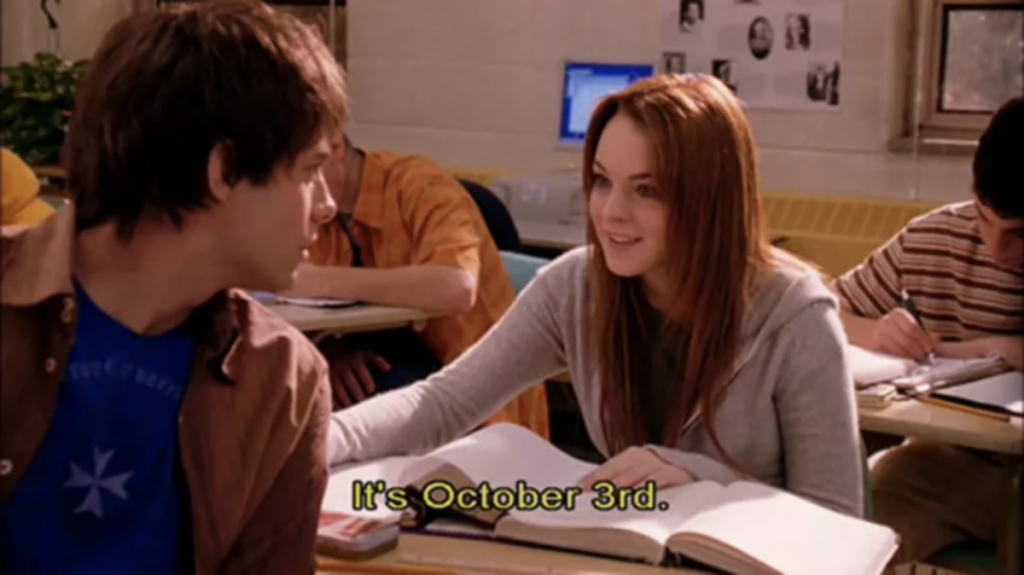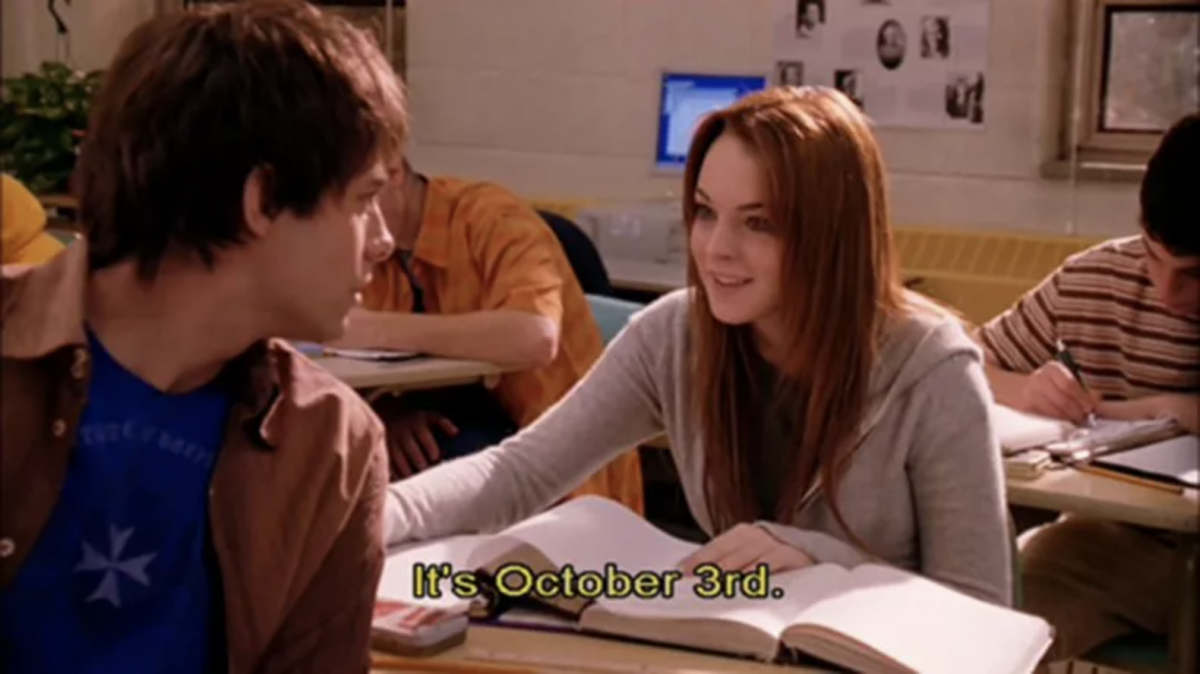The first time I saw “Mean Girls,” I watched it like I would any other romantic comedy — for the laugh-out-loud moments, feel-good romances and happy endings. But this time around, I took notes…and boy, is there a lot to unpack.
On the surface, “Mean Girls” seems like the average coming-of-age, high school movie. It features many of the classic stereotypes: popular girls, jocks, math nerds and outcasts.
Some of the scenes are over the top, like the comparisons between high school drama and African wildlife, making it appear more silly than substantive. However, though it surely exaggerates parts of the high school experience, the film still manages to realistically portray what many of us go through during our adolescent years.
On this National Mean Girls day, celebrated Oct. 3, let’s take a look at why the classic “Mean Girls” is not just a silly chick flick, but a true cinematic masterpiece.

Quotable and memorable
A main contributor to the movie’s popularity lies largely in its script, full of quotable one-liners and memorable scenes. I was quoting the movie long before I had ever seen it, and I still drop phrases from the film without even realizing it. Additionally, the film managed to designate itself an entire day and create an entire generation of people who abide by the mantra, “On Wednesdays, we wear pink.” How could anyone forget it?
Shattering film archetypes
Unlike other teen movies, “Mean Girls” goes beyond one-dimensional characters and completely sheds the typical victim/villain set-up. At first glance, you could easily identify the protagonist as Cady and the antagonists as the Plastics— Regina, Gretchen and Karen. Other side characters, like Janis and Damian, only exist to aid the protagonist. However, the movie’s progression proves that at some point, everyone takes on the roles of both villain and victim.
Regina George, the iconic character and obvious “villain,” shows moments of humanity that allow viewers to sympathize with her. Although she is undoubtedly mean, her hostility towards other girls stems from her own insecurities surrounding body image and social status.
On the other hand, Cady starts off as innocent and kind-hearted, and then she acts like a villain after being “personally victimized by Regina George.” The back and forth between these characters means you’re simultaneously rooting for everyone and no one at the same time, a dynamic that makes it that much more interesting to watch.
Exaggerated, but still realistic
Although I hate to admit it, “Mean Girls” depicts a relatively accurate image of what high school is like. The movie depicts numerous flaws in the education system, from improper health education (“Don’t have sex, because you will get pregnant…and die”) to absurd rules and oblivious adults.
The plot centers around one thing — insecurity. Cady’s insecurities push her to befriend the popular girls, sacrifice straight As for a boy and hurt the people close to her. Gretchen’s insecurities cause her to betray her friendship and reveal Regina’s secrets. And Regina’s insecurities make her believe that she needs a boyfriend, a clique and a smaller dress size to feel valid.
Every student, regardless of popularity, feels this way. An entire fight scene, entitled “the girls have gone wild,” illustrates that point. Of course, the average high schooler won’t always go to extreme lengths the way cinema depicts, but sometimes they do. “Mean Girls” resonates with young people because it explores how strongly social dynamics can affect us.
Maybe the comparisons to African wildlife were unnecessary, but they do convey that high school drama seems ridiculous when put into perspective. The way both Regina and Cady rise and fall from fame reveals just how superficial and insignificant high school popularity is. Even further, it shows how most people, regardless of differences, want to feel accepted.
Brilliant, but not perfect
Hollywood has not yet released a perfect movie, and “Mean Girls” is not an exception. The film includes many problematic moments that taint an otherwise accurate portrayal of high school. For example, while it comments on high school drama between girls, it fails to address other issues that teens deal with and instead, relegates them to punchlines.
For example, Ms. Norbury mistakenly assumes that the only Black student in her class is the new African student, to which she replies, “I’m from Michigan.” Though the moment passes with laughter from her classmates, the scene chooses to satirize how racial stereotypes within school can negatively affect Black students.
Similarly, the movie turns other problems into comedic moments and, unlike the main plot, leaves them unresolved. The bad parenting that Regina receives likely contributes to her actions, but her parents remain the same. Underage girls and women in this movie are repeatedly sexualized, but hardly anyone calls it out. And, although the movie breaks some stereotypes, it allows others to pervade, like the token gay character and the “dumb” blonde.
Obviously, the genre of romantic comedy means that, in the end, this film should be more funny than serious, and “Mean Girls” is exactly that. All reservations aside, both the better and problematic aspects of the movie just reinforce that there is more to “Mean Girls” than meets the eye.






